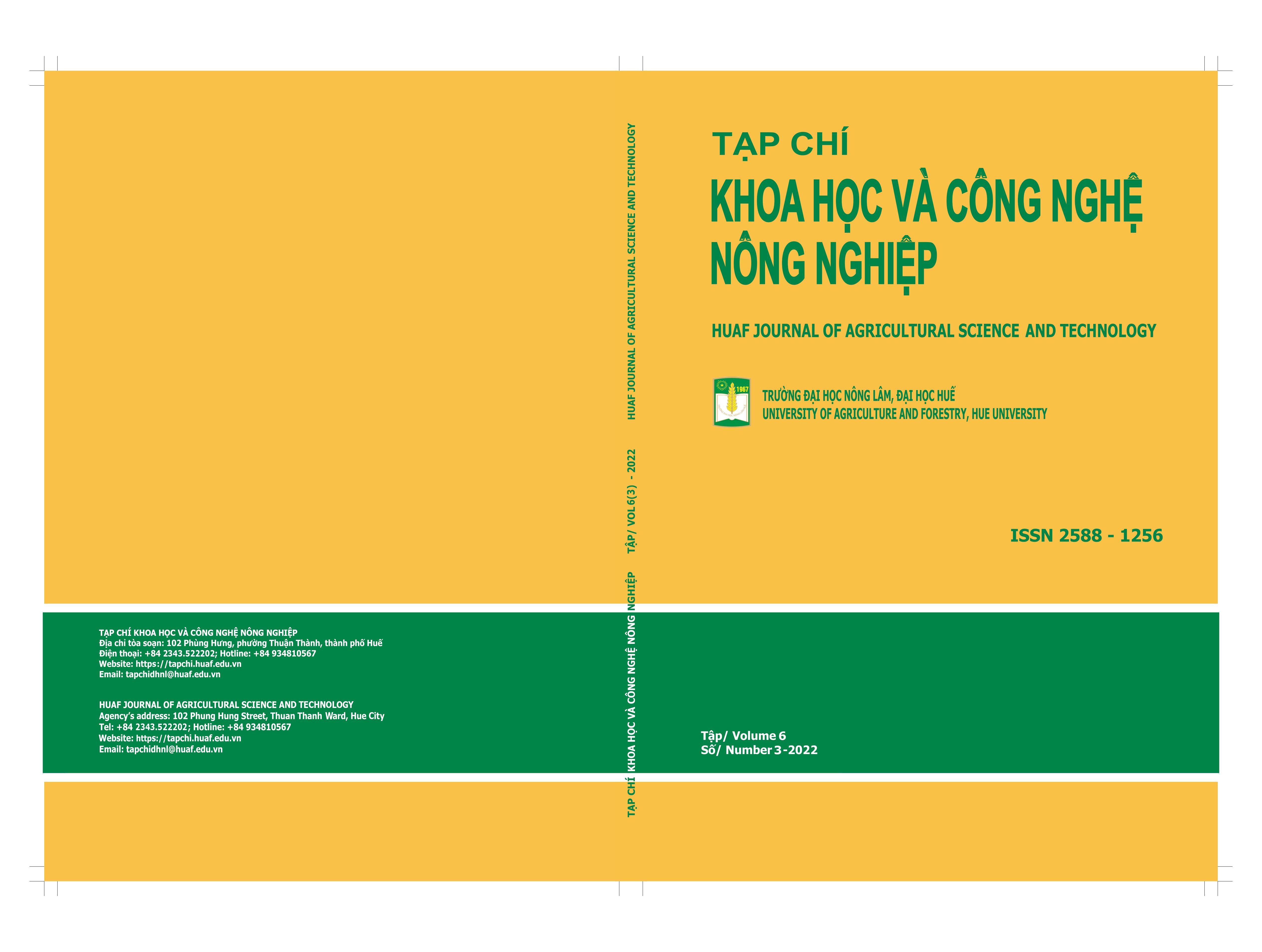##plugins.themes.huaf_theme.article.main##
Abstract
This study was aimed to evaluate the effect of harvesting stages on biomas yield, chemical composition and nutritional values of Aguara 6 Sunflower plant as ruminant forage. The experiment was conducted at the practical farm of the University of Agriculture and Forestry, Hue University. A total area of 1,300 m2 was cultivated of Sunflower plants with a density of 66,000 plants/ha. Samples of two harvesting stages consisting of flowering (75 days after seeding) and seed development (85 days after seeding) were collected to measure biomass yield, chemical composition and energy of the whole plant and their components (leaf, stem and head). Except for crude protein, other components such as dry matter, neutral detergent fiber, ether extract, and digestible energy, metabolic energy of the sunlower plant harvested at seed development stage were higher than those at flowering stage. Hence, sunflower Aguara 6 has a potential use as ruminant forage and should be harvested at seed development stage.


